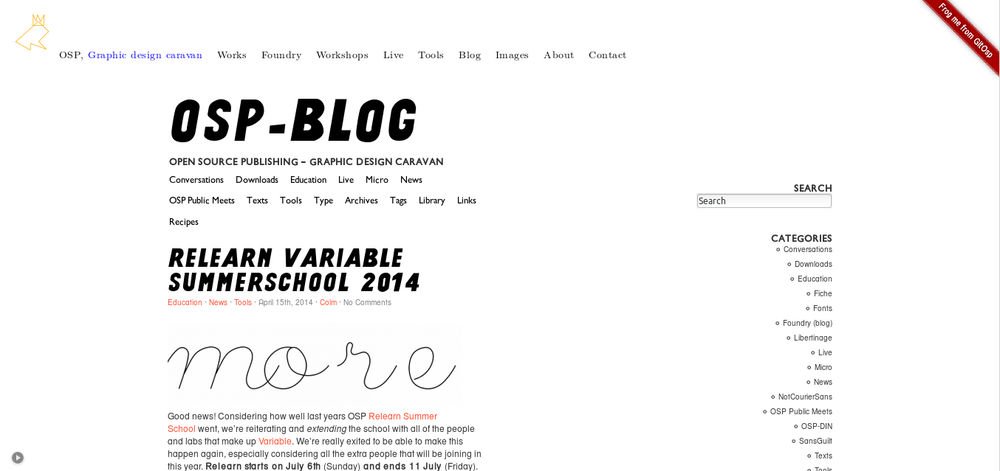Welcome to the new OSP blog! Happy to have you here. This post is titled reviving the OSP blog because in the last 5 years or so, the structure of our website has drastically changed. When this blog was started, on this day in 2006, Harrisson asked the question that has fueled this collective to this day. The point of this article is not to answer Harrisson's question, but rather to take the opportunity to look back a tiny bit, as this migration has exposed things to me that I never got the chance to see in the old blog.
Our old blog ran off Wordpress. And while Wordpress is a great system to run a blog off of, it has been hard to make it fit in with the rest of OSP's website advancements. In 2013 there was a move to show our git server as the core of the website, a way in which we could share our projects and publish their source files in the same instance. The website went from a traditional blog based site to a site that is used to communicate our design process in a ‘release early, release often’ manner: every time we add a file to our shared repository it shows up on our site.
The site changed a little over the next year or two, with it's last update to current form in 2016. Eric wrote about the precise proceedings of this on his own blog: i.liketightpants/and/. Somewhere in the mix of all this was also the move from the original domain name we had inhabited: ospublish.constantvzw.org to the current one: osp.kitchen. As the website was now an ambitious growing django app with a copy of all the git repositories we worked on, we moved to our own VPS to stop putting too much weight on the constant server.
All this meant that the blog, the original OSP site took a back seat. We kept publishing to it, but the rhythm clearly dropped. In fact, 2013 was possibly the year during which we posted the least to the blog. We attempted a rescue by fixing up the theme of the wordpress blog to fit in better with the rest of the main site, but there was nothing for it, we got too busy and had enough trouble keeping the icebergs properly updated. Bit by bit the plugins got deteriorated, and the wordpress admin felt more and more foreign. We're not really writing blog posts anymore. But this post is here to try to put a stop to this, and along with it, a whole new way of managing the blog.

In October, I found out that my favorite static site generator Pelican actually had a tool to import .xml exported wordpress archives. The script obviously heavily depends on pandoc but has recently fallen behind pandoc's latest usage models, so the import was not as clean as the tool said it would be. Not to fear, a few regex scripts later and most of the wounds were patched.
In the process, I had to make a decision to facture Wordpress's liberal attitude towards categories and tags. Seemingly, WP allows a post to be part of multiple categories, as well as have loads of tags. The latter I have no issue with, the former, when moving to a file based static site generator confuses things deeply. So I squashed any category past the first one into tags, and now categories are based on what folder they come out of, which I thoroughly appreciate in pelican. Still, I screwed up one of the scripts somewhere, there are a lot of new single tags that are actually resulting from missing commas. This one, or this one, or this one.
Lastly, I hope this move lets us use the blog with more flexibility. It's markdown file based, so we could be simply publishing other documents we've written here, or actually use it as an archive. Gitlab pages actually takes care of SSGs with Pelican so that's one less thing to worry about. We'll see how we export the generated content to somewhere on our own server in due time.
Forgive the last few code or style bleeds in the content, we're working on those!